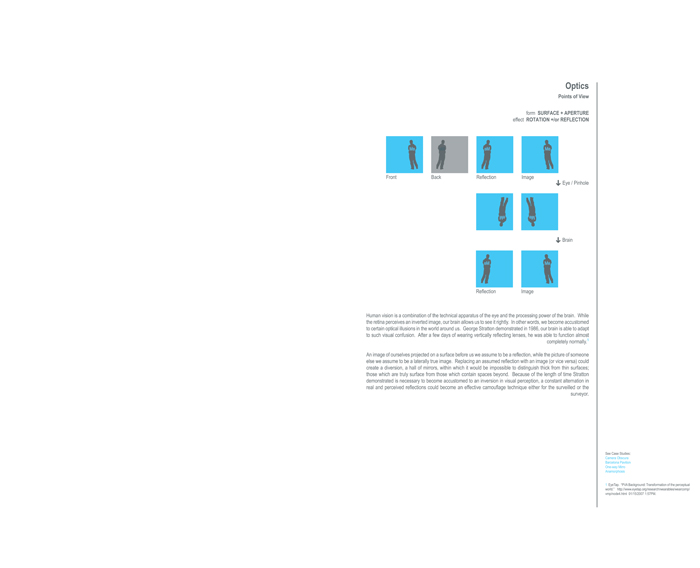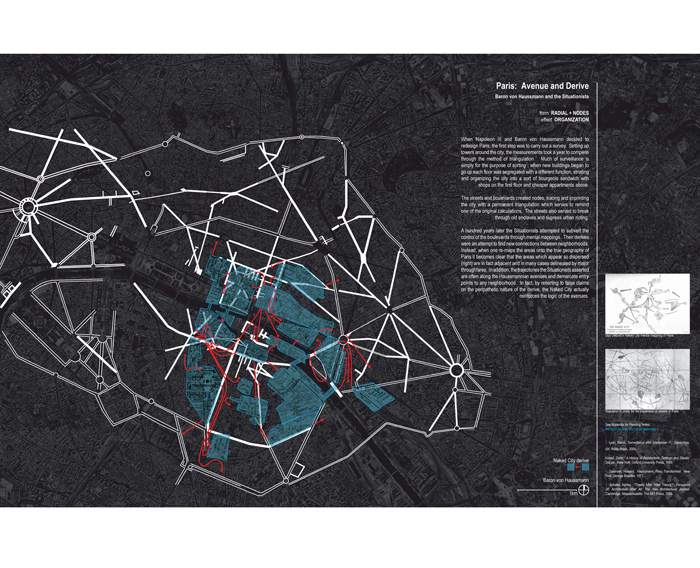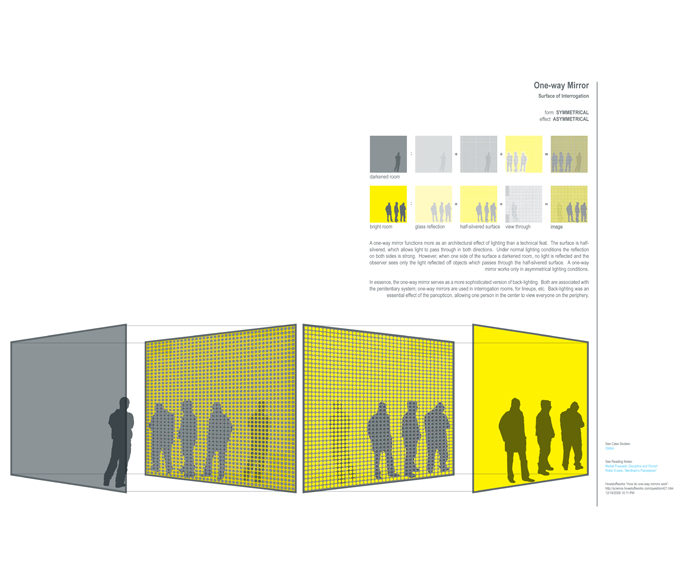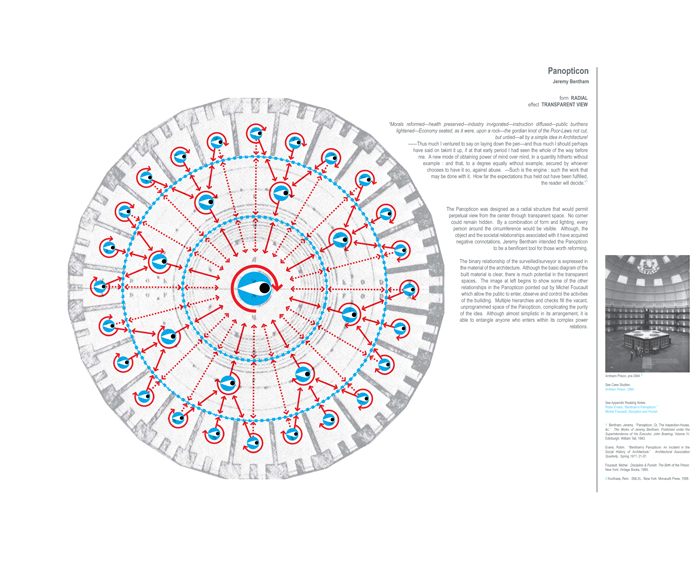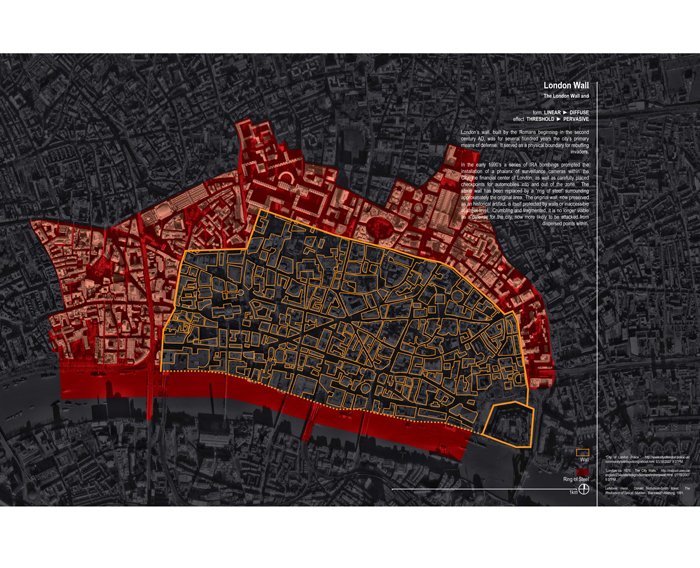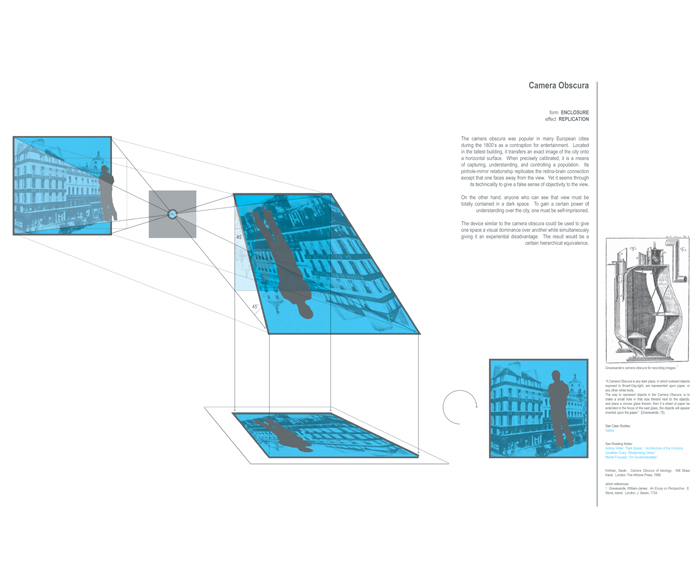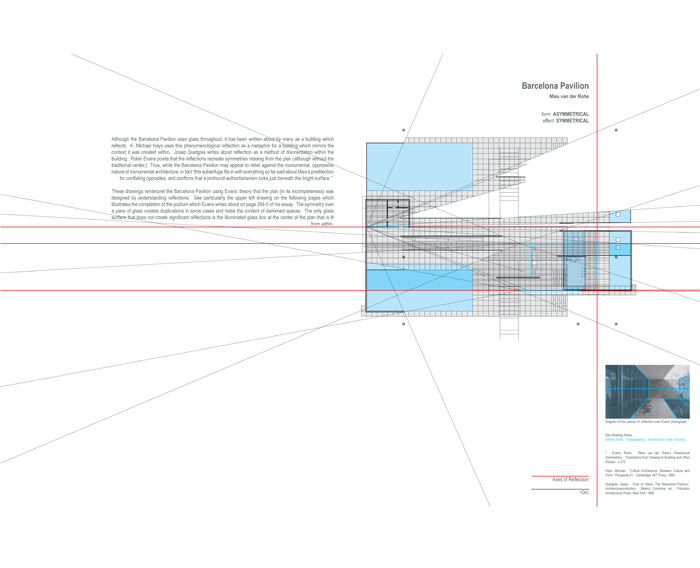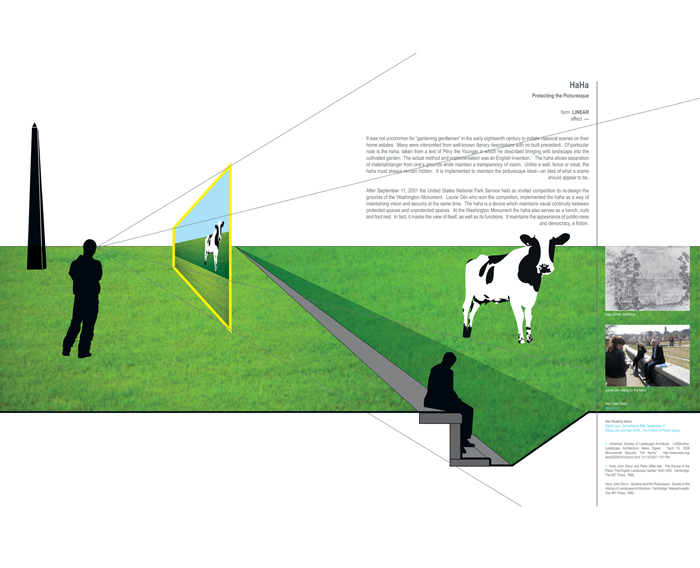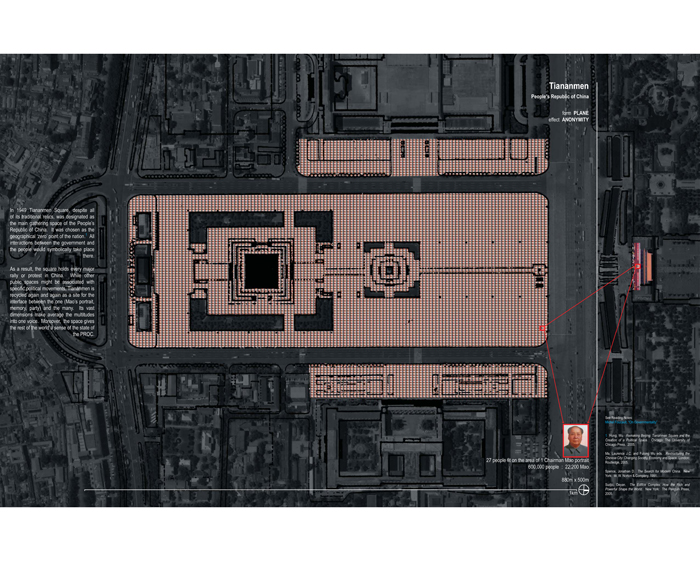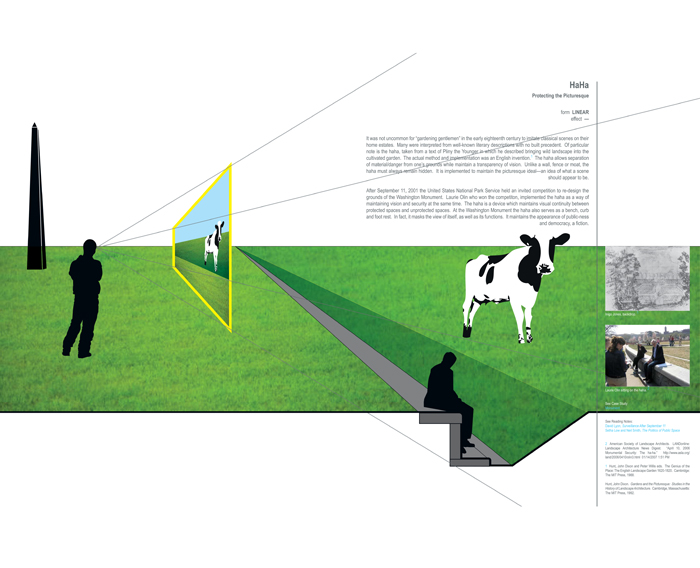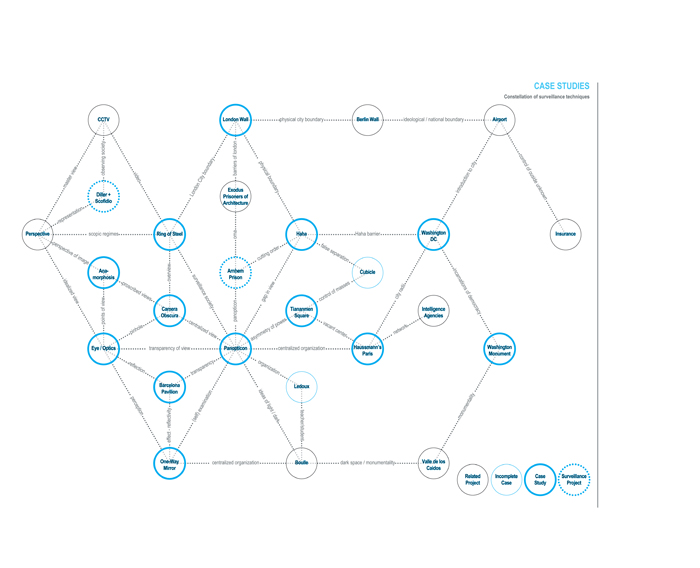
Complicity, Case Studies 2006
Harvard Graduate School of Design
Professor: Preston Scott Cohen, Gerald M. McCue Professor in Architecture
In our current environment, the presence of mechanisms of control and observation has become comforting; being watched is accepted in exchange for the knowledge that others are also undergoing the same inspection. The PATRIOT Act marked the beginning of the complicit model of surveillance in America. Coupled with the loss of formerly assumed civil liberties, it indicates a certain acceptance of surveillance as a means of understanding and organizing.
After every threat to physical security, buildings have been retro-fitted to accommodate devices of control. Architecture must take advantage of its own forms and techniques to create effects within its own parameters.
These drawings represent techniques of architecture that may assume new and particular attitudes when studied through issues of control. Transparency, symmetry or framed views may be generally affiliated with particular attitudes of building, but their reading could be easily subverted. If it is possible to re-examine these assumptions it might be possible to create architecture transparent, not in its spaces, but in its intention.
